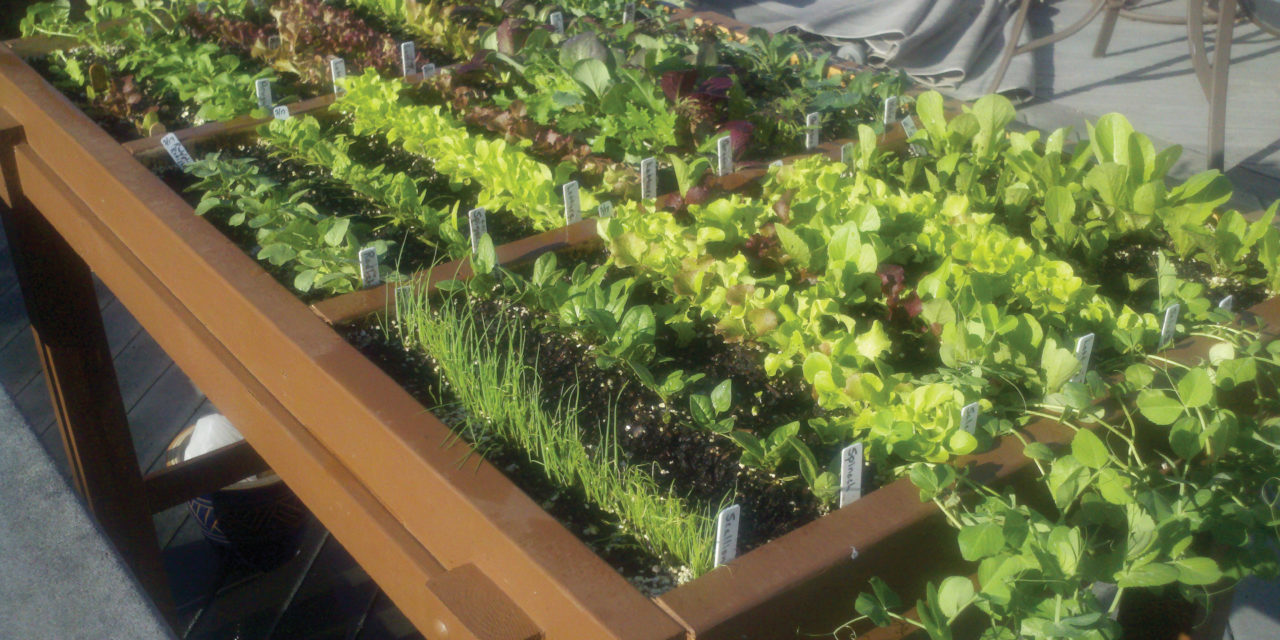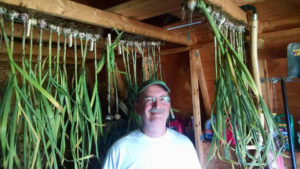by Linda L. Esterson
When Sykesville resident Butch Willard was a youngster in West Virginia, he spent time with his grandfather who grew potatoes for a living. He remembers fondly the long hours with him and his crops.
He also recalls in the mid-1970s, when he was newly married, helping his elderly neighbors with their gardens. A human resources director for Honeywell for 30 years, he was too busy to plant his own garden, but delighted in helping others benefit from the fruits of their labor.
After his transfer to Columbia, Maryland in 2003, and subsequent retirement in 2007, he wondered how he would fill his days… until he saw a 2011 advertisement for vegetable gardening classes through the Carroll County Master Gardeners.
Now a master gardener himself, Willard offers advice to countless gardeners, from the novices to experts as he leads the Grow It Eat It (GIEI) team for Carroll County.
If you’ve always wanted to grow a garden, but were hesitant – or even fearful – agonize no more.
Finding the Perfect Spot
Tips from gardening masters make the process as easy as 1, 2, 3, so easy that the first step could be the hardest: finding the light.
Find an area of your yard that has at least six to eight hours of full sun each day. This is usually a southern or southeastern exposure, that receives the first sun of the day and warms up earliest in the day, Willard says. This starts the growing process earlier. This area also experiences the least wind, which can cause soil erosion.
The selected area also should sit at the highest elevation possible, which avoids frost pockets and warms up before spots in the lowest elevation that stay colder and wetter longer.
Willard recommends testing the soil to determine its nutrients – nitrogen, potassium, phosphorous and organic matter like leaves, worms and decaying matter – and what supplemental fertilizer is needed for successful planting.
Some people choose to use composte or decaying matter alone or in concert with prepared fertilizer. Soil in Carroll County, Willard notes, is mostly comprised of clay, so many gardeners choose raised beds for planting. Willard built 4-foot by 10-foot wooden frames with 2×6 timbers for his beds, which hold raised mounds of soil. He and others sometimes add soil atop cardboard or newspaper to create a perfect planting bed.
Willard advises against tilling, which disturbs natural wildlife that lives in the soil, awakens weed seeds from hibernation, and makes soil finer, more compact and hardened over time.
This area of the country is perfect for a variety of crops. Willards suggests planting seeds of broccoli, cabbage, kale, mustard greens, spinach and brussel sprouts indoors in containers in February, and tomatoes in March.
Serious gardeners utilize fluorescent indoor lighting to mimic the sun, starting the growth process and continuing until the plants can be transferred to the ground outdoors. The leafy vegetables are hearty and can survive outdoors through late fall. Tomatoes, he says, along with cucumbers and sweet potatoes prefer the heat.
He built a salad table, with a screened bottom for drainage, which houses lettuce and spinach. He and his wife also plant herbs in pots that stay on their porch throughout the summer and fall.
Timing is Everything
Planting at the right time proves essential. Although some plants like cabbage, lettuce, spinach and Asian greens thrive in cooler weather, frost is something they cannot tolerate without help. The optimal choice is to plant outdoors after the season’s final frost but spun polyester row covers can help keep them warm until late April and in the fall.
“Don’t be tempted to plant warm season plants too early,” notes Willard. “They will either be killed by frost or because the soil is too cold and they won’t grow well.”
Willard suggests planting a few cool season crops if you can’t wait to avoid the temptation of putting warm season crops in the ground too soon.
The Maryland State Department of Agriculture provides a planting calendar for novices (See Grow It, Eat It).
Protecting the Growth Process
In order for plants to grow into vegetables, they need regular watering and fertilizing, but also they need to flower and become pollinated, according to Kay Sedlak, master gardener also with the Carroll County Master Gardeners through the University of Maryland Department of Agriculture.
Tomatoes, she says, self-pollinate but other vegetables need pollinators in the form of flies, ants, bees and even bats to transfer pollen. This is particularly important for crops that grow fruits like tomatoes, cucumbers, peppers, eggplant, squash, and melons.
“It’s important to attract pollinators to the garden by growing other flowering plants that will attract them to the garden,” says Sedlak, who notes this is true of herbs as well.
Beneficial insects include the pollinators but also the pests that feed on other insects.
While gardeners need to allow some pests into the garden, others need to be locked out. Deer, squirrels, rabbits and other “rodents” need to be kept out with large wire barricades. Planting mint or other herbs they dislike will only keep them from that particular plant, Willard says. Some gardeners choose electric fences, but this is not feasible if the family has children. Willard also suggests the website www.deerbusters.com for assistance with fencing.
For a great garden, consider attending planting classes, held by the Grow It Eat It Program as well as local hardware and gardening stores.
“It’s a lot of work and a lot can go wrong,” says Willard. “Training (and planning) can help you be successful. Start small with easier vegetables and with experience you can grow things that are more difficult.”


